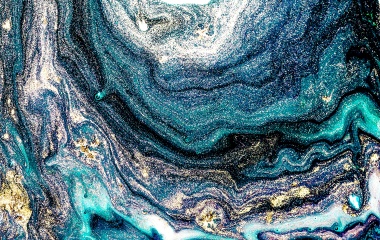
For better or worse most people pay little attention to the proof texts brought to support various Talmudic views and positions, focusing on the teaching itself and little else. Often in order to properly follow how the proof text is used one needs to understand the context of the verse. The Talmudic editors assumed that when a verse was quoted the learner was well acquainted with chapter and verse. This helps explain why often the actual part of the verse that serves as the proof is not even quoted, with the Talmud quoting the first half of the verse when the proof lies in the second unquoted half. It was assumed there was no actual need to quote the entire verse as it was known by all. Sadly many - even serious students of Talmud - are blithely oblivious to this as they pay little attention to the text quoted.
So it was most interesting to see a dispute amongst the commentaries regarding which proof text the Talmud meant to cite in allowing tzarchei rabbim, the needs of the community to be done on Chol Hamoed. Many of these needs focused on fixing roads, clearing wells for drinking and fixing mikvaot, ritual baths,things that, especially after the long winter, would be done on Chol Hamoed Pesach. That these activities were not just permissible but obligatory can be seen by the Talmud’s view of those who tarry to carry out the public good. “From when [do we know] that if they went out and did not do all of this that all blood that is spilled the Torah considers it as if they had spilled it - from the verse ‘and blood shall be upon you” (Moed Katan 5a). As Rabbeinu Chananel (11th century, Tunis) notes in his commentary, the Torah instructs that “when we build a new house you shall place a guard rail around the roof and [thus] you shall not put blood in your house [lest] one will fall from it” (Devarim 22:8). By not taking necessary precautions one is considered as if they spilled blood. The proof seems simple enough - build a fence or be an accessory to any blood that may be spilled.
However it is not so simple. A note on the side of Tosafot (who quotes Rabbeinu Chananel) says this cannot be as the verse quoted in our text is a similar, albeit different verse “then blood will be upon you” (Devarim 19:10). This verse refers not to building a fence on one’s roof but to the construction of arei miklat, cities of refuge[1]. These cities were set up to safeguard someone who killed accidentally and has reason to fear that vigilante justice will be carried out against him - most likely by family members of the deceased. The Torah in exhorting us to build these cities of refuge states “Innocent blood shall not be spilled in the land that G-d gives you as a heritage, [and if not] the blood should be upon you” (Devarim 19:10). If such a city of refuge is not built the community is responsible for any blood that may be spilled as a result.
But does it really matter if our Sages equate passivity with bloodshed based on the verse from the mitzvah of building a roof or that of building a city of refuge? Perhaps not. Rabbeinu Chananel in fact quotes both sources, perhaps indicating that both are equally compelling - and interchangeable. However perhaps the insistence on deriving this from arei miklat is most significant. Putting a fence around a flat roof is something readily apparent and for most people requires little prompting from the Torah. The few roofs I have been on that were owned by non-Jews all had fences around them. This is basic common sense.
However building an arei miklat is something else. It is not at all obvious that one should do so and no society that I am aware of has actually set these up. One could argue that little protection should be offered to one who due to carelessness killed someone[2]. Furthermore this verse is not even talking about the six cities of refuge that had to be set up when the Jewish people settled the land. Rather this verse is referring to an additional three cites of refuge that the Jewish people will have to set aside “if the Lord your G-d will expand your borders as He wore to your forefathers” (Devarim 19:8), something that has yet to happen.
Many are careful to protect against obvious and foreseeable dangers. And all too often it is left up to the individual to ensure those around him are protected. Such is the fence we build on our roof. But we demand more. We must build, must concern ourselves with potential dangers that many do not yet see. We build not only fences but cities to protect not only the innocent[3] but even the careless. And even if we have enough safeguards today we must worry about what might be in the future, when G-d rewards us “because we have fulfilled all the mitzvoth”. Nonetheless we may never rely on G-d alone to protect us. And when there is potential danger we dare not delay but have to interrupt our holiday to make sure our pathways are safe for all.
[1] This is such a glaring mistake - after all is it possible Rabbeinu Chananel and Tosafot misquoted a verse of Chumash - that some want to blame the printers who instead of writing miklat, refuge, wrote maakeh, a fence. Of course it is equally possible that the “error” is in the Talmudic text itself where the “wrong” verse was quoted. And these errors assume that it is not possible that our medieval giants “misplaced” a verse, an assertion that is not at all certain. (See Marc B. Shapiro Studies in Maimonides and His Interpreters)
[2] One only goes to arei miklat if there is a small measure of negligence. One who is completely blameless need not flee to one - and the Torah expects that in such a case there is no danger of “revenge".



